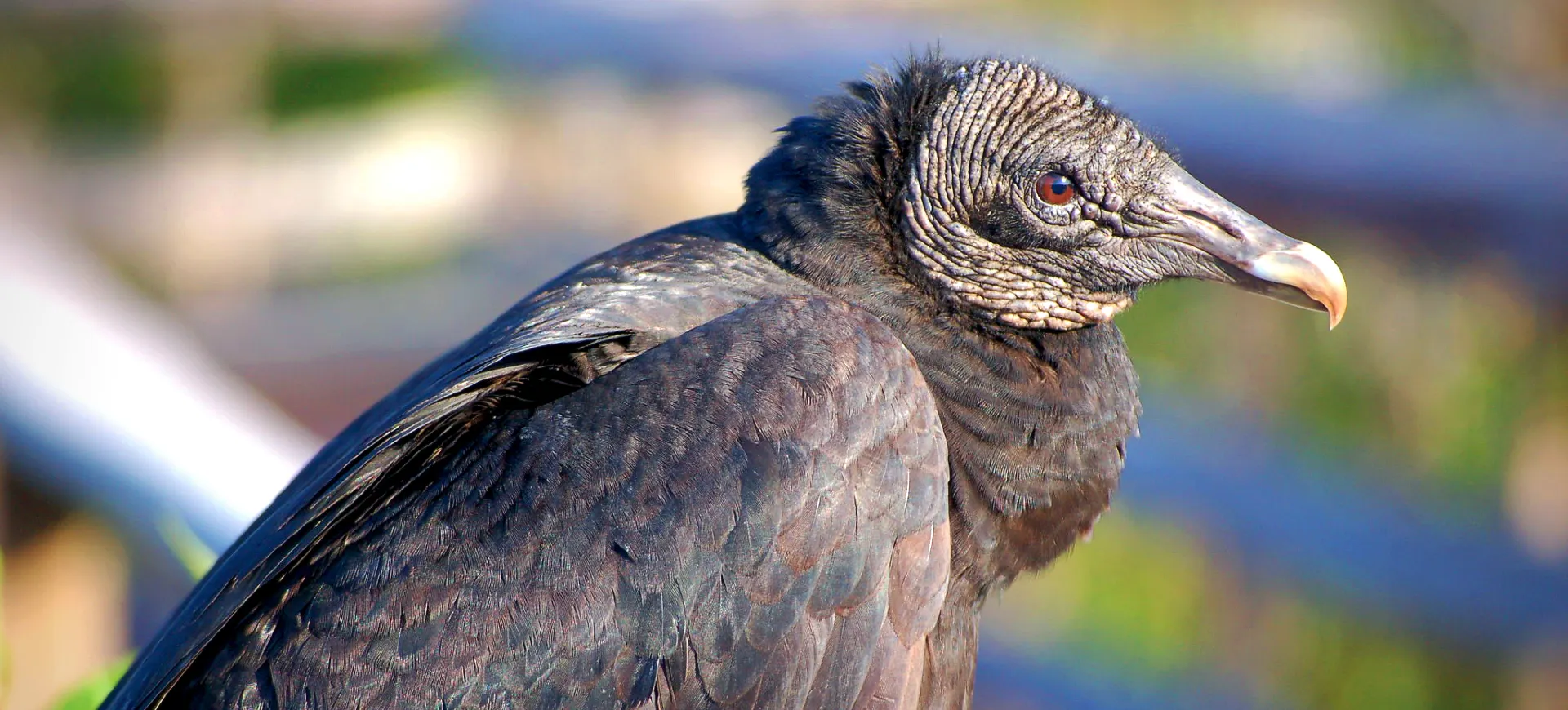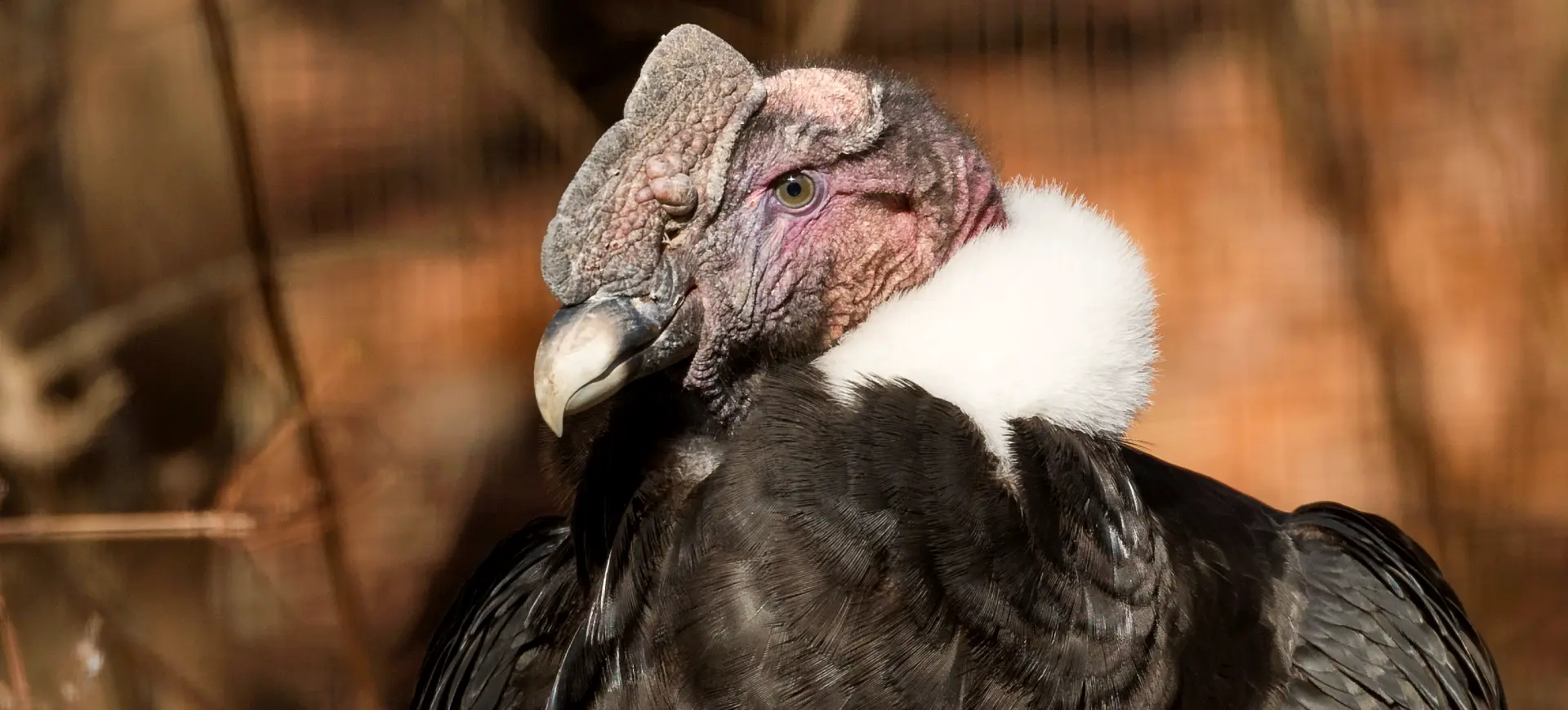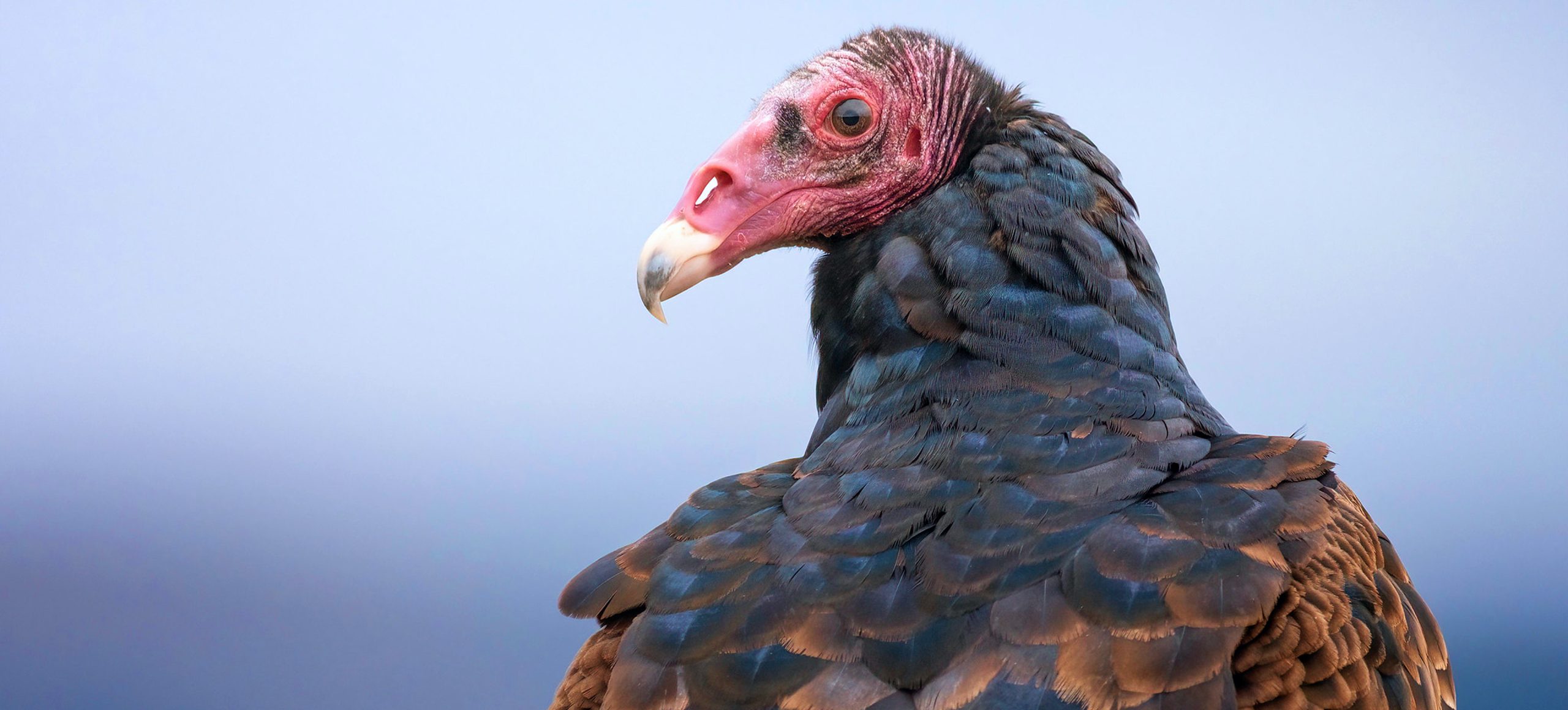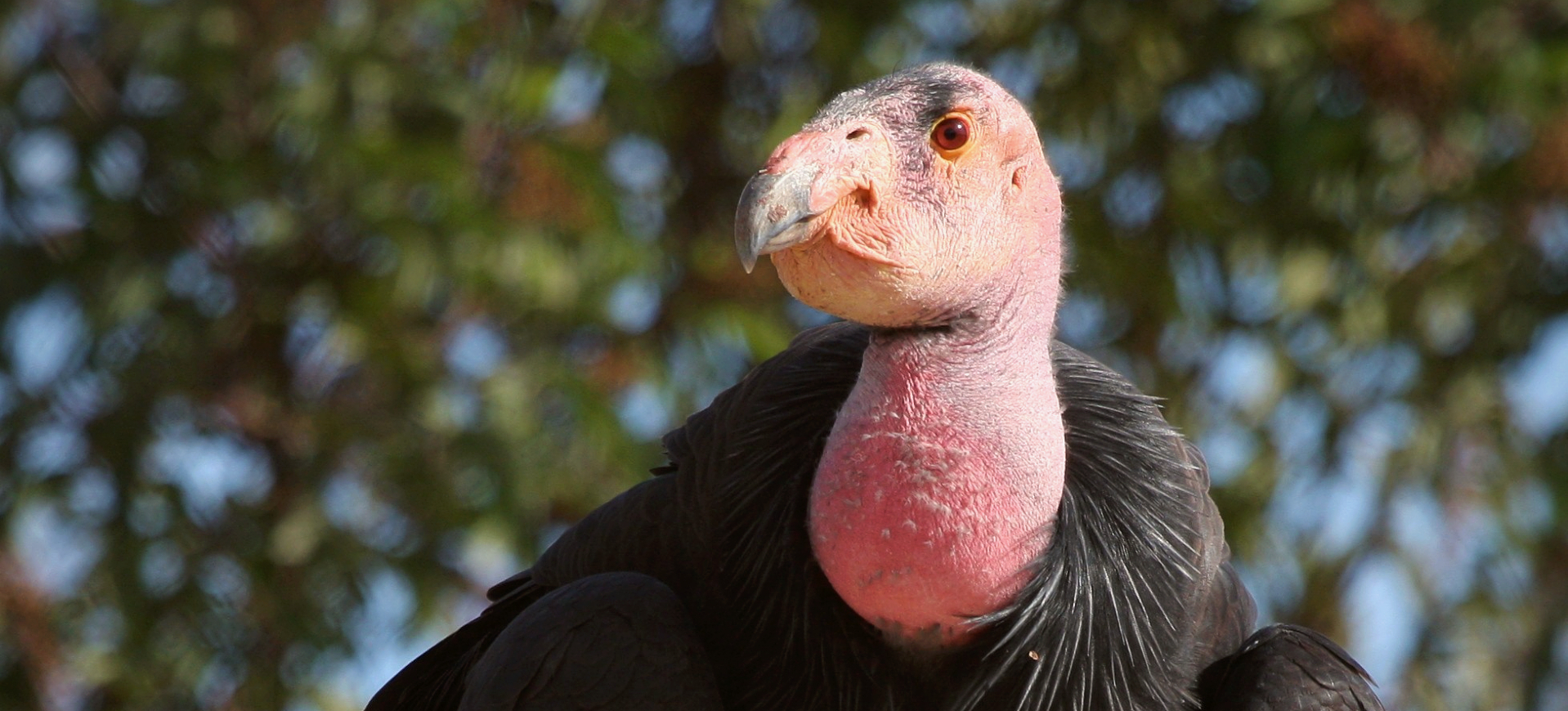Overview
The King Vulture (Sarcoramphus papa) is a large bird of prey found in the tropical forests of Central and South America. Known for its strikingly colorful appearance, the King Vulture has a predominantly white body with black flight feathers and a tail. Its head and neck are bald, showcasing vibrant red, orange, and yellow hues, with a distinctive fleshy caruncle on the beak in adults. This species plays a crucial role in the ecosystem as a scavenger, feeding primarily on carrion and thus preventing the spread of disease by consuming dead animal matter.
King Vultures are solitary or found in pairs and are often seen soaring high in the sky on thermal currents, searching for food. They possess a keen sense of sight and smell to locate carcasses, which is unusual among New World vultures, as they rely more on sight. Despite their large size, with a wingspan reaching up to 2 meters (6.5 feet), King Vultures are quite elusive and are more often heard than seen in their dense rainforest habitat. Conservation efforts for the King Vulture focus on habitat preservation and protection from poaching, as their populations face threats from deforestation and human encroachment.
The breeding habits of the King Vulture are less understood than those of other vulture species, but they are known to nest in tree hollows or on cliff ledges, laying a single egg. Both parents share the incubation duties and feed the chick once it hatches. The survival of juvenile King Vultures into adulthood heavily relies on the availability of suitable nesting sites and sufficient food sources, highlighting the importance of conserving their natural habitats. Research and conservation programs aim to monitor King Vulture populations, ensuring the stability of this vital scavenger species within the ecosystem.
Taxonomy
Kingdom
Phylum
Class
Order
Family
Genus
Species
Type
Physical Description:
The King Vulture is one of the most visually striking members of the vulture family, with adults boasting a mix of vivid colors on their bare skin, contrasting with their predominantly white and black plumage. They are among the largest vultures in the New World, with adults weighing between 2.7 to 4.5 kg (6-10 lbs) and standing up to 80 cm (31 inches) tall. The sharp, hooked beak is well-adapted for tearing flesh, and their strong, broad wings are designed for efficient soaring. The lack of feathers on the head and neck is a hygienic adaptation for their scavenging lifestyle, preventing blood and other substances from adhering to their skin while feeding.
Juvenile King Vultures are less colorful than adults, with darker plumage and a more uniform gray head and neck. The transition to the adult’s vibrant coloration occurs as they mature, which can take up to five years. Their powerful legs and paws are more for support and manipulation of food than for capturing prey, as their diet consists entirely of carrion. The striking appearance of the King Vulture not only sets it apart visually from other vulture species but also reinforces its role as a dominant scavenger, often displacing smaller vultures at carcasses.

Lifespan: Wild: ~20 years || Captivity: ~30 years

Weight: Male & Female: 6-10 lbs (2.7-4.5 kg)

Length: Male & Female: 26–32 inches (67 to 81 cm)

Wingspan: Male & Female: 70–80 inches (180-203 cm)
Characteristic:
Native Habitat:
King Vultures inhabit the tropical lowland forests of Central and South America, ranging from southern Mexico to northern Argentina. They are adapted to live in the canopy, nesting and roosting in large trees, but descend to the forest floor to feed. Their habitat preferences include rainforests, savannas, and grasslands with abundant large trees for nesting. Preserving these habitats is crucial for maintaining King Vulture populations, as deforestation and habitat fragmentation pose significant threats.
Conservation initiatives focus on protecting the vast tracts of forest essential for the King Vulture’s survival. These efforts include establishing protected areas, sustainable forestry practices, and reforestation projects. The King Vulture’s dependence on large expanses of forest for foraging and nesting highlights the importance of comprehensive conservation strategies. Efforts to protect their habitats contribute to preserving biodiversity and the ecological balance of tropical forest ecosystems.
Climate Zones:
Biogeographical Realms:
Continents:
Diet:
Diet & Feeding Habits:
The King Vulture is a scavenger, feeding almost exclusively on carrion. It utilizes its keen eyesight and sense of smell to locate dead animals, from large mammals to smaller birds and reptiles. Unlike other scavengers that may wait for the decomposition process to soften their food, the King Vulture’s strong beak allows it to tear open tough skin and access the fresh meat inside. This species plays a vital role in the ecosystem by helping to clean up dead animal matter, thus preventing the spread of diseases.
King Vultures often feed in groups at large carcasses, where their dominance allows them first access to the food source, ahead of other scavenger species. They are known to follow the activity of predators and other vultures to find their meals. Despite their preference for fresh carrion, King Vultures can digest meat in various stages of decomposition thanks to their highly acidic stomach. The conservation of their natural habitats ensures the availability of adequate food sources and the health of King Vulture populations.
Mating Behavior:
Mating Description:
King Vultures are believed to form monogamous pairs, with both male and female participating in nest building, egg incubation, and chick rearing. Nesting sites are typically located in large trees, where a simple platform is constructed for the egg. A single egg is laid per breeding season, and both parents share the responsibility of incubation, which lasts for about 50 to 60 days. The chick is altricial at birth, requiring several months of parental care before it is ready to fledge.
The care provided by both parents ensures the survival and growth of the chick, teaching it the necessary skills for an independent life. The breeding cycle of King Vultures, including their nesting habits and parental investment, is critical for the continuation of the species. Conservation efforts that protect nesting sites and reduce disturbances in breeding areas are vital for the reproductive success of King Vultures. Understanding and preserving the breeding behaviors of King Vultures are important components of conservation strategies aimed at ensuring the species’ future.
Reproduction Season:
Birth Type:
Pregnancy Duration:
Female Name:
Male Name:
Baby Name:
Social Structure Description:
King Vultures are solitary or seen in pairs, except when congregating at large food sources, where their dominant status often allows them first access to carrion. They establish territories that they defend vigorously, particularly during the breeding season. The social interactions of King Vultures, particularly about feeding and breeding, play a significant role in their survival and reproductive success. Their dominance at carcasses ensures that they play a pivotal role in the scavenger community, helping to maintain the ecological balance.
Understanding the social behavior of King Vultures, including their territoriality and hierarchy at feeding sites, is important for conservation planning. Efforts to protect their feeding and breeding territories from human disturbance are crucial for their continued survival. Studying their social structure provides insights into their ecological needs and helps guide conservation efforts. Protecting the environments that support the social life of King Vultures is essential for their well-being and the health of the ecosystems they inhabit.
Groups:
Conservation Status:
Population Trend:
The King Vulture is currently listed as Least Concern by the IUCN, thanks to its wide but patchy distribution throughout Central and South America. However, specific populations are under threat in areas where deforestation and habitat destruction are prevalent. Conservation measures focus on habitat protection and establishing protected areas to ensure viable habitats for King Vultures. Research and population monitoring are crucial for understanding their population dynamics and the effectiveness of conservation efforts.
In regions where conservation measures have been effectively implemented, King Vulture populations remain stable. The species’ role as a scavenger makes it an important ecosystem component, contributing to the health and balance of tropical forest environments. Mitigating threats such as habitat loss, pollution, and human disturbance is key to preserving King Vulture populations. Through continued conservation action and habitat management, there is hope for maintaining the presence of King Vultures in their natural habitats.
Population Threats:
The primary threats to King Vulture populations include habitat loss due to deforestation for agriculture, logging, and urban development. These activities lead to the fragmentation of their natural habitats, reducing the availability of nesting sites and food sources. Illegal hunting and poisoning, often in response to livestock predation concerns, also pose risks to king vampires despite their scavenging diet. The impact of climate change on tropical forest ecosystems further threatens their habitat and food availability.
Conservation strategies to address these threats include enforcing laws against deforestation and hunting, promoting sustainable land use practices, and educating communities about the ecological importance of vultures. Efforts to rehabilitate and release injured or poisoned vultures back into the wild also contribute to population maintenance. The protection of large, contiguous areas of forest is essential for the survival of King Vulture populations and the preservation of tropical biodiversity. Addressing the challenges of habitat loss and human-wildlife conflict is crucial for the conservation of King Vultures.
Conservation Efforts:
Conservation initiatives for the King Vulture focus on habitat preservation, anti-poaching measures, and environmental education to raise awareness of their ecological role as scavengers. Establishing protected areas and wildlife reserves in Central and South America provides safe havens for King Vultures and other wildlife. Reforestation and habitat restoration projects help to counteract the effects of deforestation and habitat fragmentation. Educational programs aimed at local communities highlight the importance of vultures in maintaining healthy ecosystems and encourage conservation support.
Collaborative efforts between conservation organizations, governments, and local communities are key to effectively protecting King Vulture habitats. Research and monitoring programs provide valuable data on King Vulture’s ecology, distribution, and conservation status, informing management decisions and conservation strategies. The involvement of local communities in conservation initiatives ensures sustainable practices and the long-term preservation of tropical forests. Through continued dedication and conservation action, there is hope for maintaining stable populations of King Vultures in their natural habitats, ensuring their role in the ecosystem for generations to come.
Additional Resources:
Fun Facts
- King Vultures are one of the few bird species that can be identified by smell due to the distinct odor of their droppings.
- Unlike many other vulture species, the King Vulture has a colorful appearance, with bright red, orange, and yellow hues on its head and neck.
- They can soar for hours without flapping their wings, utilizing thermal currents to conserve energy.
- King Vultures have a very strong stomach acid, allowing them to safely consume carrion that may be teeming with harmful bacteria.
- The name “King Vulture” is believed to derive from the Mayan belief that this vulture was a “king” or “lord” over all other vultures.
- King Vultures do not have vocal cords and communicate through grunts and hisses instead of the traditional calls made by other birds.
- They play a vital role in their ecosystem by disposing of dead animals, thus preventing the spread of disease.
- King Vultures are monogamous and are known to form long-term pair bonds with their mates.
- The eyesight of a King Vulture is exceptionally sharp, allowing it to spot a carcass from great distances.
- Conservation efforts for the King Vulture also help protect numerous other species that share their habitat, underscoring their importance to biodiversity.











